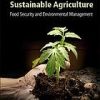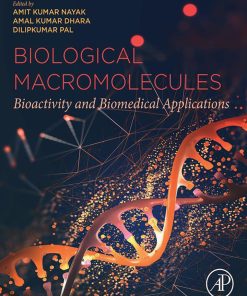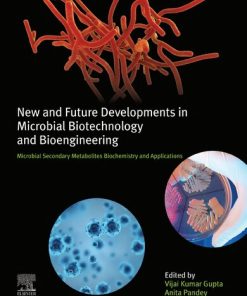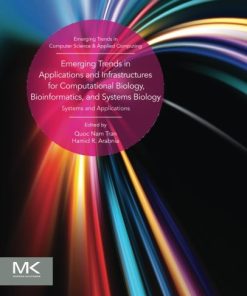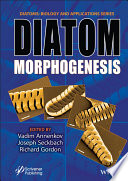Microbial endophytes functional biology and applications 1st edition by Ajay Kumar, Radhakrishnan 0128226650 9780128226650
$50.00 Original price was: $50.00.$25.00Current price is: $25.00.
Microbial endophytes: functional biology and applications 1st edition by Ajay Kumar, Radhakrishnan E.K – Ebook PDF Instant Download/DeliveryISBN: 0128226650, 9780128226650
Full download Microbial endophytes: functional biology and applications 1st edition after payment.

Product details:
ISBN-10 : 0128226650
ISBN-13 : 9780128226650
Author: Ajay Kumar, Radhakrishnan E.K
Microbial Endophytes: Functional Biology and Applications focuses on endophytic bacteria and fungi, including information on foundational endophytes and the latest advances in relevant genomics, proteomics and nanotechnological aspects. The book provides insights into the molecular aspects of plant endophytes and their interactions and applications, also exploring the potential commercialization of endophytic microorganisms and their use as bio fertilizers, in biocontrol, and as bioactive compounds for other sustainable applications. Coverage of important and emerging legal considerations relevant to those working to implement these important bacteria in production processes is also included.
Microbial endophytes: functional biology and applications 1st 1st Table of contents:
1: Entry, colonization, and distribution of endophytic microorganisms in plants
Abstract
1.1. Introduction
1.2. The rhizosphere and its role in endophytic associations
1.3. Endophytes and host plant surfaces
1.4. Entry and colonization of plants by bacterial endophytes
1.5. Plant internalization and extraction of nutrients from microbes in the rhizophagy cycle
1.6. Genomic insights into host and endophyte interaction
1.7. Transmission of endophytes
1.8. Endophytic diversity
1.9. Conclusion or future prospective
2: Benefits of plant-endophyte interaction for sustainable agriculture
Abstract
2.1. Introduction
2.2. Endophytic microorganisms
2.3. Endophytic bacteria
2.4. Endophytic bacterial colonization in plants
2.5. Transition from rhizospheric bacteria to endophytic bacteria
2.6. Molecular mechanisms of endophytic bacteria involved in its interactions with plants
2.7. Molecular mechanisms of plants involved in its interaction with endophytic bacteria
2.8. Benefits of plant–endophytic interactions in plant growth promotion
2.9. Benefits of plant–endophytic interactions in biocontrol of plant diseases
2.10. Conclusions
Acknowledgment
3: Plant growth-promoting mechanisms of endophytes
Abstract
3.1. Introduction
3.2. Bacterial endophytes and their diversity
3.3. Current understanding on the mechanisms of plant growth promotion by bacterial endophytes
3.4. Various mechanisms
3.5. Microbial production of IAA
3.6. ACC deaminase production
3.7. Phosphate solubilization
3.8. Nitrogen fixation
3.9. Siderophore production
3.10. Biocontrol
3.11. Competition
3.12. Antibiotics
3.13. Lytic enzymes
3.14. Induced systemic resistance
3.15. Ethylene
3.16. Quorum quenching
3.17. Plant probiotics
3.18. Conclusions
4: Endophytic bacterial strains induced systemic resistance in agriculturally important crop plants
Abstract
4.1. Introduction
4.2. Endophytes providing disease resistance and mode of action
4.3. Endophytes providing ISR against wilt diseases
4.4. Optimization of bioactive metabolite production by endophytes through statistical approach
4.5. Bioformulation of endophytes
4.6. Challenges related to the development of endophytic formulation
4.7. Future prospective in endophytic research
4.8. Conclusion
Acknowledgments
5: Endophytes and seed priming: agricultural applications and future prospects
Abstract
5.1. Introduction
5.2. Types of seed priming
5.3. Factors affecting seed priming processes
5.4. Role of endophytes in seed priming
5.5. Future perspectives
5.6. Conclusion
Chapter 6: The chemical warfare involved in endophytic microorganisms-plant associations
Abstract
6.1. Introduction
6.2. Mechanisms used by endophytic fungal to colonize plant tissues
6.3. Mechanisms used by endophytic fungi to promote growth of plant
6.4. Increase of resistance of plant to biotic and abiotic stresses
Acknowledgments
7: Endophytic microbial influence on plant stress responses
Abstract
7.1. Introduction
7.2. How do endophytes help in stress tolerance?
7.3. Plant growth promotion by the endophytes
7.4. Abiotic stress alleviation by the endophytes
7.5. Biotic stress
7.6. Commercial applications of stress tolerant endophytes
7.7. Conclusion
8: Microbial bioformulation-based plant biostimulants: a plausible approach toward next generation of sustainable agriculture
Abstract
8.1. Introduction
8.2. Concept of bioformulation, composition, and microbial metabolites
8.3. Production and marketing constraints
8.4. Bioformulation as biocontrol agents
8.5. Formulation and application methods
8.6. Microbial bioformulation-based plant biostimulants
8.7. Mechanisms implicated in plant biostimulatory effects on crop productivity
8.8. Current Scenario/Market Trends
8.9. Regulatory framework
8.10. Conclusion
Acknowledgments
9: Genomic insights of plant endophyte interaction: prospective and impact on plant fitness
Abstract
9.1. Introduction
9.2. Microbial diversity
9.3. Omics–unraveling plant–endophytic interaction
9.4. What makes microbes an endophyte?
9.5. Plant fitness: Plant–endophyte interaction
9.6. Perspectives: a way ahead
10: Fungal endophytes-induced gene expression studies in biotic and abiotic stress management
Abstract
10.1. Introduction
10.2. Endophytic fungi and their importance in agriculture
10.3. Gene expression analysis
10.4. Gene expression analysis in plant–microbe interactions
10.5. Conclusion and future prospects
11: Endophytic fungi from medicinal plants: biodiversity and biotechnological applications
Abstract
11.1. Introduction
11.2. Endophytic fungi from medicinal plants
11.3. Biodiversity and distribution of fungal endophytes
11.4. Biotechnological applications
11.5. Conclusion and future prospects
Acknowledgments
12: Biosynthesis of silver nanoparticles from endophytic fungi and their role in plant disease management
Abstract
12.1. Introduction
12.2. Mechanism of mycosynthesis of silver nanoparticles
12.3. Silver nanoparticles from endophytic fungi and their efficacy in biocontrol
12.4. Mechanism of antimicrobial action by silver nanoparticles
12.5. Factors affecting the mycosynthesis of metal nanoparticles
12.6. Nanoparticles in plant disease management
12.7. Conclusions
13: Biocommercial aspects of microbial endophytes for sustainable agriculture
Abstract
13.1. Introduction
13.2. Incidence of microbial endophytes diversity
13.3. Comparison of native and alien endophyte inoculants
13.4. Growth promotional aspects due to symbiosis
13.5. Deciphering disease suppressive mechanisms
13.6. Commercialization of endophyte products for sustainable agriculture
13.7. Bio market
13.8. Recent developments and applications of microbial endophytes
13.9. Conclusion and future perspectives
Acknowledgments
14: Microbial endophytes and their intellectual property rights
Abstract
14.1. Introduction
14.2. Endophytes and their patents
14.3. Microbe’s intellectual properties-related conflicts
14.4. Role of WIPO governing intellectual properties of microbial organisms
14.5. Implementation of IP protection of microorganisms
14.6. The Budapest Treaty
14.7. Conclusion and prospects
People also search for Microbial endophytes: functional biology and applications 1st:
microbial endophytes pdf
microbial root endophytes
what is microbial biofilms
microbial endosymbionts
bacterial endophytes and their interactions with hosts
Tags: Microbial endophytes, functional biology, applications, Ajay Kumar, Radhakrishnan
You may also like…
Computers - Networking
Science
Respiratory Biology of Animals: Evolutionary and Functional Morphology 1st Edition Steven F. Perry
Engineering - Industrial Engineering & Materials Science
Biology and other natural sciences - Biology
Biology: Concepts and Applications 10th Edition by Cecie Starr 9798214338392



